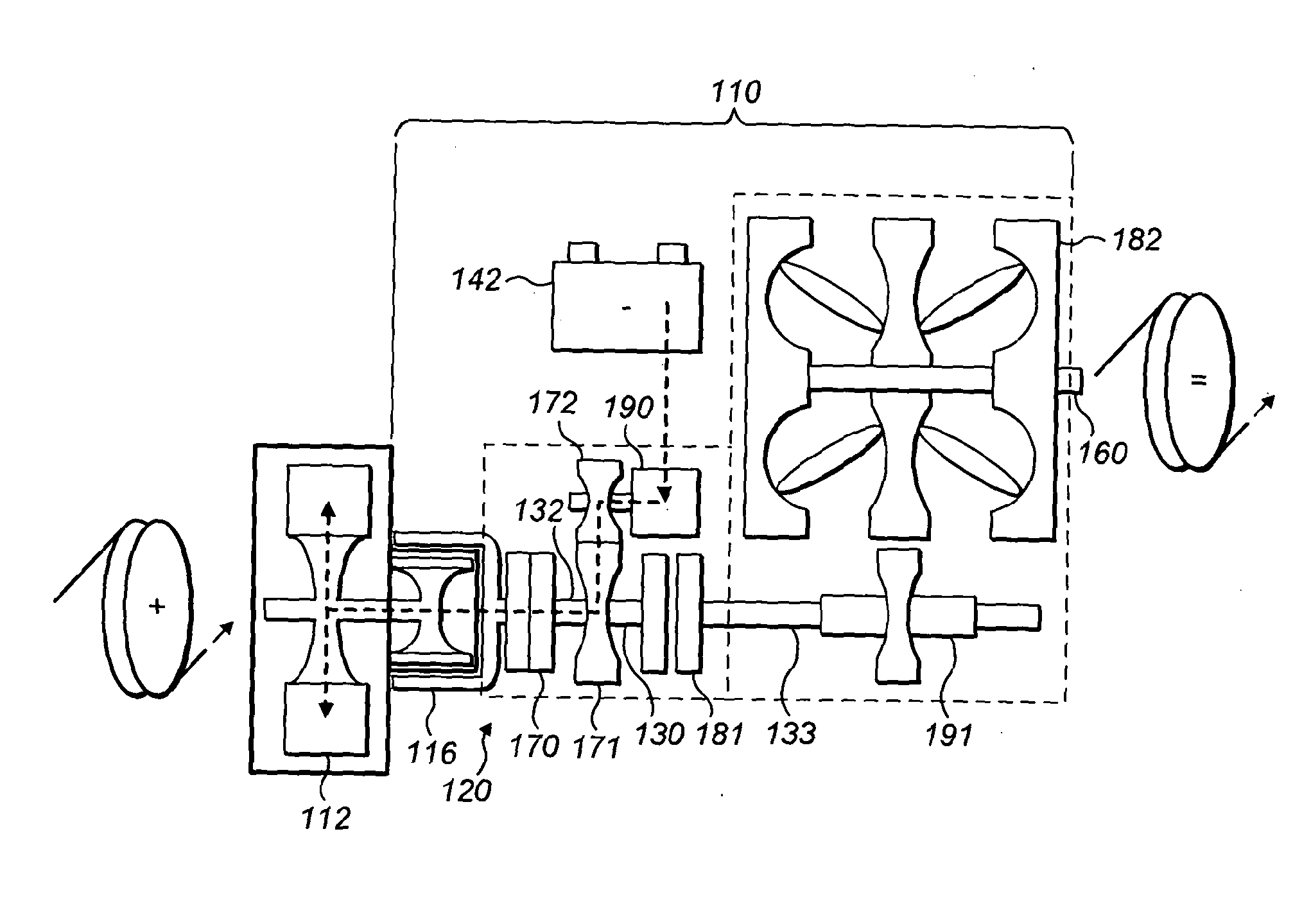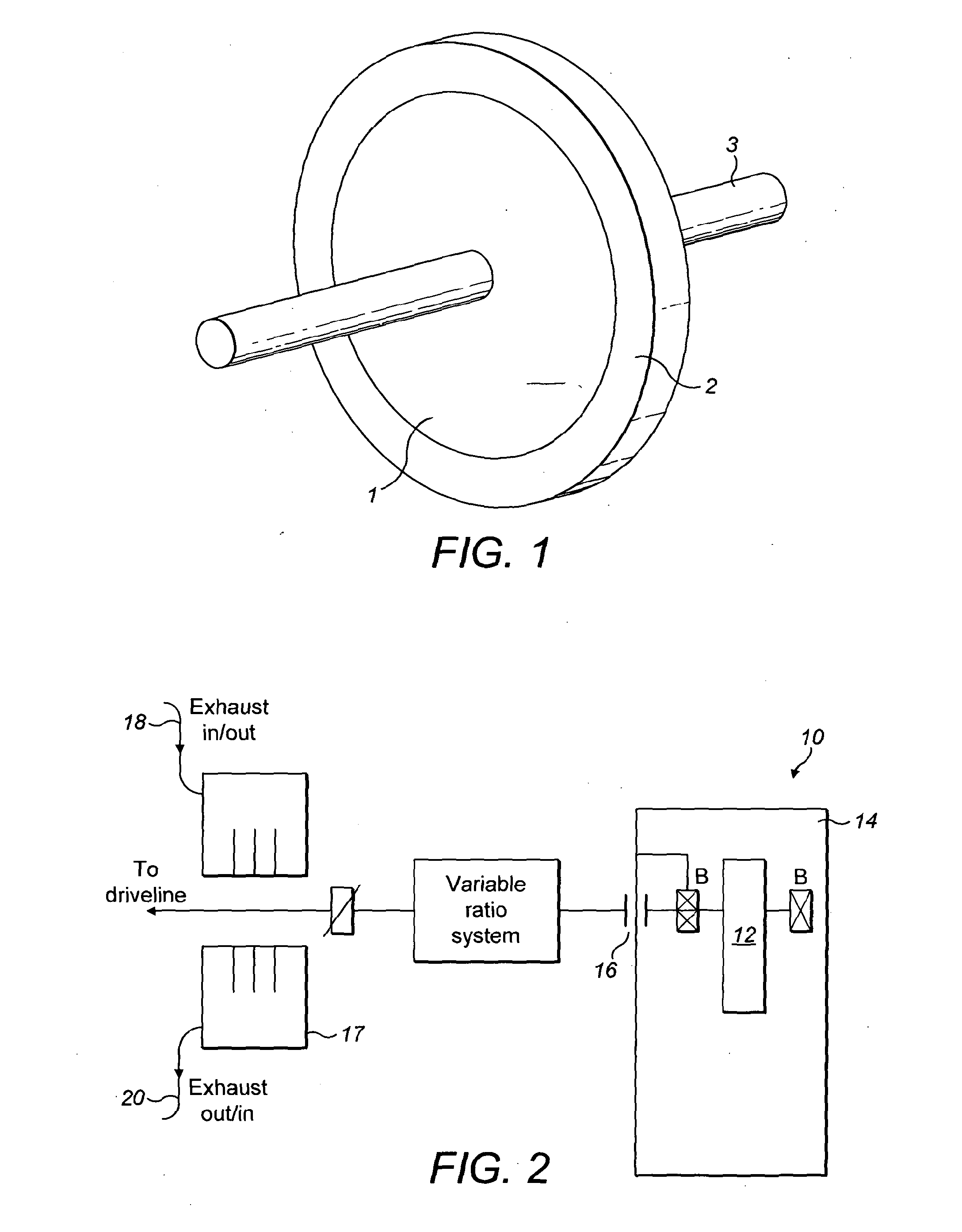Energy storage system
a technology of energy storage and energy storage, applied in the field of energy storage systems, can solve the problems of limiting the system life, deteriorating battery health, and limited warranty on batteries in conventional hybrid systems, and achieves the effects of increasing efficiency, no loss of efficiency, and achieving greater efficiency
- Summary
- Abstract
- Description
- Claims
- Application Information
AI Technical Summary
Benefits of technology
Problems solved by technology
Method used
Image
Examples
Embodiment Construction
[0088]FIG. 1 shows a typical existing flywheel arrangement. A substantially circular central metallic support section 1 can be axially mounted on a central support such as a shaft 3. At least one composite ring 2 is mounted on the central support section 1. In the flywheel shown in FIG. 1, the composite ring 2 is filament wound from carbon fibre. As will be known to the skilled person, and as discussed above, a flywheel device such as the one shown in FIG. 1 can be used as a mechanical battery to store kinetic energy for use, for example, within a motor vehicle.
[0089]Examples of related technologies which can be applied to such a vehicle will first be described, followed by a description of an embodiment.
[0090]Exhaust—Driven Flywheel
[0091]Another example approach for optimising energy supply and its conversion from the stored chemical energy to torque, particularly in ICE powered motor vehicles is the use of turbochargers and superchargers. As will be known to the skilled person, tu...
PUM
 Login to View More
Login to View More Abstract
Description
Claims
Application Information
 Login to View More
Login to View More - R&D
- Intellectual Property
- Life Sciences
- Materials
- Tech Scout
- Unparalleled Data Quality
- Higher Quality Content
- 60% Fewer Hallucinations
Browse by: Latest US Patents, China's latest patents, Technical Efficacy Thesaurus, Application Domain, Technology Topic, Popular Technical Reports.
© 2025 PatSnap. All rights reserved.Legal|Privacy policy|Modern Slavery Act Transparency Statement|Sitemap|About US| Contact US: help@patsnap.com



